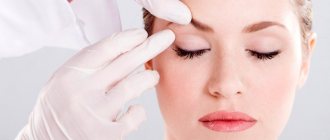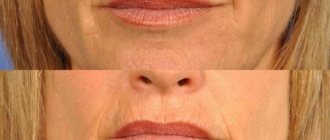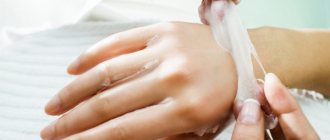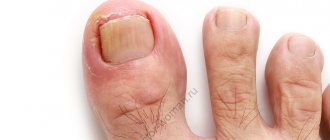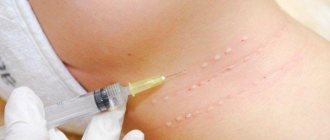Today, skin problems are far from uncommon. After all, it, like litmus paper, reflects all our experiences, the consequences of bad habits, lack of sleep, stress, etc. But most people lead just such a lifestyle, are constantly under stress and try to keep up with the changes occurring at a breakneck speed . All this does not contribute to maintaining the health and beauty of the skin, including the eyelids. As a result, there are often complaints of dry eyelids, which leads to discomfort, aesthetic defects and a faster onset of age-related changes with the formation of wrinkles around the eyes.
Features of the skin of the eyelids
The skin of the eyelids is very different in structure from that covering other parts of the body. In general, the skin has 3 layers: epidermis, dermis and subcutaneous fat. In turn, the epidermis, i.e. the outermost layer of the skin, is also a multilayer structure. Directly on the eyelids it has 4 layers:
- horny;
- grainy;
- spiny;
- basal.
Moreover, all layers of the epidermis of the eyelids and their skin as a whole, like the area around the eyes, are several times thinner than in other areas of the face. The epidermis is 85-90% composed of keratinocytes, i.e., a special kind of cells that are rich in the protein keratin. It is this that ensures the strength and density of the skin, which allows it to perform its protective functions. Keratin is synthesized in the cells of the spinous layer of the epidermis, and since on the eyelids it can be formed by only 2 layers of cells, while in other parts of the body its thickness can be up to 15 layers of cells, the amount of keratin formed is quite small. Therefore, the skin of the eyelids is very sensitive and delicate, and any external influences inevitably cause damage to it.
In addition, the skin of the eyelids may completely lack a granular layer of epidermis. The main function of the cells that form it is the synthesis of lipids, i.e. fats. This is the main reason that the skin of the eyelids loses one of the important elements of protection - the lipid barrier. This also leads to the fact that it retains water worse, is prone to dehydration, and therefore dryness, as well as easy rejection of the cells of the stratum corneum in the form of scales, i.e. peeling.
The degree of skin hydration depends on 2 factors: the condition of the stratum corneum of the epidermis and the amount of sebum. If at least one of them changes, the lipid layer that protects the skin of the eyelids from moisture loss (dehydration) also changes, usually towards a decrease in thickness.
Also, the skin of the eyelids is distinguished by very loose subcutaneous fatty tissue. That is why it is easy to notice numerous blood vessels in its thickness, and this also determines its sensitivity to the adverse influence of external factors. At the same time, there are almost no sebaceous glands in it, which means that there is practically no wetting of the stratum corneum of the epidermis with the secretion it synthesizes and it remains unprotected from external factors.
All this together leads to the fact that the thin and sensitive skin of the eyelids is highly susceptible to dryness, especially with dry type. Therefore, in people even under 30 years of age, peeling, decreased elasticity, discomfort, itching, eyelids becoming gray-white, rough, and worsening of the skin pattern are often observed. Moreover, over the years, the condition only worsens, since there is a decrease in the amount of lipids formed, and the already small thickness of the lipid film decreases even more. Therefore, it is important to take care of your eyelid skin from an early age. Otherwise, loss of elasticity leads to the formation of a fine network of fine wrinkles that can quickly deepen. Initially, they usually appear in the corners of the eyes, which are called crow's feet.
In addition to aesthetic disadvantages, dry eyelids are also dangerous from the point of view of the development of inflammatory processes and immune reactions. Indeed, against the background of the inferiority of the lipid film, the skin becomes more vulnerable to the penetration of microorganisms, exposure to allergens and harmful substances. Therefore, a complication of dry eyelids may be the development of dermatological diseases due to the addition of a secondary infection.
Salon treatments for skin around the eyes
It is difficult to influence the eyelid area using cosmetic methods, as it is delicate and sensitive. But they exist, and it's not just blepharoplasty. The following methods are popular:
- Massage. A course of lymphatic drainage removes severe swelling, normalizes microcirculation and generally has a positive effect on the condition of the dermis in this area. It is usually included in a complex of care measures.
- Mesotherapy without injections. Beneficial substances are delivered to the skin using equipment without breaking the skin barrier. Such procedures brighten and strengthen, improve the quality of the skin around the eyes, and restore.
- Biorevitalization with laser. Hyaluronic acid is delivered to the skin of the eyelids using a cold laser beam, absolutely without pain, the skin is smoothed, saturated with moisture, becomes healthy and glowing.
- Contour plastic. Eliminates wrinkles and deep folds using special fillers (based on hyaluronic acid) or your own fat (lipofilling).
Peeling of the eyelids can also be performed, but it is very gentle and removes dead cells.
Causes
There are 3 main skin types: normal, oily and dry. It is not surprising that it is with dry skin that changes are most often observed that cause physical and psychological discomfort, in particular peeling, irritation and discoloration. At a young age, such skin looks velvety and soft, but as it ages, in the absence of proper care, its condition rapidly deteriorates, and signs of age-related changes and signs of aging quickly increase.
Dry skin type is most common in women.
A special role in the development of dry eyelids is played by dehydration and delipidation of the stratum corneum of the epidermis, i.e., a decrease in the water content in the epithelium and a decrease in lipid production. But dryness can also be caused by disturbances in the process of keratinization of the epidermis, which leads to structural changes in the cells that form it and disruption of their communication with each other.
Thus, even with normal or oily skin type, the eyelids can become dry. This is called acquired dry skin and may be caused by:
- ultraviolet rays (also causes signs of photoaging);
- wind;
- high temperatures;
- low ambient humidity;
- excessive eyelid skin care using cosmetics containing aggressive ingredients;
- frequent mechanical damage from nails or objects;
- smoking and alcohol abuse;
- insufficient fluid intake during the day;
- malnutrition, leading to the development of vitamin deficiency in the body;
- long-term use of a number of medications, in particular systemic retinoids.
Dry eyelids tend to get worse with age, which is called senile keratosis. This is especially pronounced in women entering premenopause and menopause due to physiological hormonal changes. This is due to the fact that over the years there is a decrease in the production of sebum and sweat, a decrease in lipid production, which leads to the weakness of the protective hydrolipid film.
But dry eyelids can also be caused by pathological changes in the body, both from the skin itself and internal organs and systems. Therefore, it can act as a symptom:
- endocrine disorders, especially diabetes mellitus, hypothyroidism;
- diseases of the nervous system;
- chronic intoxication;
- hypovitaminosis, especially with a lack of vitamins A and C;
- blood diseases;
- hepatitis, liver cirrhosis;
- chronic renal failure;
- dermatological diseases, including contact, atopic dermatitis, ichthyosis, different types of lichen, demodicosis, etc.
In such situations, dryness may worsen after washing, prolonged exposure to the sun or in a room with dry air, where air conditioning is running, exposure to high temperature, etc. In such situations, a feeling of tightness of the skin and itching may also occur.
If the disorder is of an allergic nature, dry eyelids provoke contact with respiratory, food allergens or cosmetics. In the first case, it may be plant pollen, fumes from household chemicals, or animal hair. Contact dermatitis often develops in women as a result of individual intolerance to certain substances contained in decorative cosmetics or creams. Shampoos, conditioners, hair sprays and other similar products can cause similar reactions when they come into contact with the skin of the eyelids.
With atopic dermatitis, dry skin is observed not only on the eyelids, but also on other parts of the body. At the same time, they often cause severe itching, and peeling is also observed.
Therefore, if you have dry eyelids, especially if it is persistent and cannot be eliminated with cosmetics, it is important to consult a dermatologist or dermatocosmetologist. The doctor will not only be able to select the optimal tactics for caring for the delicate skin of the eyelids, but also discover the causes of its dryness and prescribe treatment appropriate to the situation.
Problem: dark circles under the eyes
Blueness and darkened skin are difficult to disguise, so simply “covering up” a tired look is a doubly thankless undertaking. It is safer to deal with the root causes, and in this case there are also many of them. Among them may be:
- Genetics (tendency to skin hyperpigmentation, deep-set eyes, too thin skin under the eyes);
- Hypoxia (local lack of oxygen, which can be associated with both ENT problems and chronic lack of sleep);
- Bad habits;
- Impaired blood flow in the eye area due to high visual load and overstrain of the neck muscles;
- Age-related changes : every year the epidermis becomes thinner, the skin becomes less dense, loses tone and begins to “see through”.
Solution: massage
Anastasia Dubinskaya, psychophysiologist, candidate of sciences, founder of the school of natural rejuvenation “Revitonika”
Patches and fillers will not saturate the blood with oxygen and will not replace eye exercises and proper rest. First, start walking more, regularly spend time in the fresh air, sleep, do exercises - and the bruises will gradually begin to disappear.
Secondly, inspect not only the skin itself, but also what is underneath it. The root of all imperfections in the eye area is spasm of different groups of facial and neck muscles and impaired blood flow. Improve their tone and notice how your skin changes. How exactly? Use a gua sha scraper, which improves the elasticity and color of the skin, and do gymnastics - exercises to remove tension in the neck release the vessels from compression and restore blood supply to the face.
Solution: injection techniques
Special injection meso-cocktails and biorevitalizants, which are also selected individually, depending on age, tendency to swelling and possible frequency of visits, will help with dryness and slight blueness around the eyes. After a few procedures, you may well notice that you can actually do without concealer or foundation.
Treatment of dry eyelids
The tactics to combat dry eyelids depend on the causes of its occurrence. If it lies only in the initially dry skin type or is a consequence of the adverse influence of external factors, it is enough to organize proper eyelid care, avoid contact with aggressive environmental factors and, if necessary, carry out a course of cosmetic procedures.
But if the root of the problem lies in the development of dermatological diseases or disorders in the functioning of internal organs, longer and more complex treatment will be required. In such situations, it will always be comprehensive and aimed not only at moisturizing and nourishing the skin of the eyelids, but also at eliminating detected diseases.
In case of an allergic reaction, antihistamines or corticosteroids are prescribed.
Absolutely all patients who consult a dermatologist with the problem of dry eyelids are recommended to protect their eyes on sunny days, especially in summer, with sunglasses that completely cover the eyelids and protect them from the negative effects of ultraviolet rays, or to apply special sunscreens. It is also worth giving up bad habits, enriching your daily diet with sources of vitamins A, C, E and drinking at least 2 liters of water daily, in addition to other drinks.
Additionally, complex vitamin preparations are prescribed.
Home eyelid skin care
To avoid problems with the skin of the eyelids and the development of diseases, it is important to properly care for it. Dry eyelid skin first of all requires sufficient hydration and protection from external irritants. Therefore, cosmetologists recommend:
- Use only special makeup removers created taking into account the structure of the skin of the eyelids and avoid soap and alcohol lotions when washing. It is important to avoid intense friction and mechanical irritation. It is better to blot the skin with a soft cotton pad soaked in the product.
- Regularly use special creams, masks, serums for the area around the eyes containing humectants and physiological lipids. Do not apply them to the moving eyelid unless this option is written on the packaging. Most products are applied to the orbital bone.
- Apply the cream no later than 1-2 hours before bedtime. Otherwise, there is a high probability of bags under the eyes forming in the morning. The optimal time for eyelid skin care is considered to be from 19 to 22 hours.
- Under no circumstances should you use scrubs and peels to exfoliate the skin of your eyelids.
- Protect your eyes from contact with shampoo, shower gel, and facial cleansers.
Caring for dry skin, including eyelids, should always include 2 types of treatment: gentle cleansing and adequate moisturizing. To cleanse the skin, use soft, non-foaming products, such as micellar water or cold creams. They contain mineral oils, non-ionic detergents (esters and micelles of fatty acids), which carefully dissolve contaminants, including decorative cosmetics. At the same time, they are easily removed from the skin with a cotton pad and do not require friction. In addition, they do not remove natural lipids, in particular cerebrosides and ceramides, which is an additional plus.
In addition, we must not forget that the main cause of dry eyelids is the insignificant thickness of the lipid film and dehydration. Therefore, it is important to focus efforts on maintaining normal levels of moisture and lipids. For this purpose, it is recommended to use cosmetics containing physiological lipids and humectants (hydrants), in particular:
- fatty acids, ceramides, cholesterol;
- glycerin, waxes, mineral and natural oils;
- hyaluronic acid, urea, lactic acid, collagen.
To eliminate severe dry eyelids, you should choose masks and serums. In milder cases and to maintain healthy skin, creams are sufficient.
Humectants ensure that water present in the stratum corneum is introduced deep into the skin. These include: NMF, polyols, liposomes, glycosaminoglycans, elastin, collagen. The NMF system deserves special attention, which includes a variety of water-soluble and hydrophilic substances that are natural to the stratum corneum. One of the brightest representatives of such products is a composition based on pyrrolidonecarbolic acid, urea and lactic acid.
Substances that form a lipid film, on the contrary, help slow down the loss of water through the stratum corneum. These include all compounds that form the oil phase of any cream. This can be petroleum jelly, paraffin, silicones, natural oils rich in polyunsaturated fatty acids, lanolin.
For severe peeling, a dermatologist may recommend keratolytics. But they are used with caution.
Care products are selected individually, taking into account skin type, time of year and other factors. Thus, in late autumn and winter it is recommended to use products containing moisturizers, and in the summer you should avoid using creams containing comedogenic lipids. But the emphasis is always on the ability of an eyelid skin care product to create a protective film.
For atopic dermatitis, ichthyosis and many other dermatological diseases, the use of fatty creams of the “water in oil” type is indicated. Their distinctive feature is the distribution of a small amount of liquid components in a fatty dispersion medium. They effectively solve the problem of dry eyelid skin, loss of elasticity and help reduce superficial inflammatory processes.
It is important to correctly apply care products to both eyelids. This is done exclusively along massage lines with light, patting movements to prevent overstretching of the skin and to avoid premature formation of wrinkles. On the lower eyelid, the cream is applied from the outer corner of the eye towards the nose, and on the upper eyelid, on the contrary, from the nose to the outer corner of the eye.
Cosmetology procedures
Cosmetic procedures are carried out only if the development of dermatological diseases is excluded. Today, biorevitalization and mesotherapy are used to solve the problem of dry eyelids. These procedures involve the introduction of substances into the skin that help moisturize and nourish it.
If dry eyelids are the result of age-related changes, you can additionally fill the nasolacrimal groove and wrinkles around the eyes with fillers, i.e., contour plastic surgery. This will further achieve a pronounced anti-aging effect.
But any cosmetic procedures cannot be performed if:
- oncological diseases;
- exacerbation of herpetic infection;
- acute infectious disease or exacerbation of a chronic disease;
- pregnancy and lactation;
- autoimmune disorders.
Biorevitalization
Biorevitalization is a procedure that involves the introduction of hyaluronic acid into different layers of the skin through multiple point injections or non-injection methods. Patients should understand that biorevitalization does not provide an immediate effect. It increases smoothly within 2 weeks after the procedure and lasts for an average of 6-12 months.
To obtain a pronounced result, a course of procedures consisting of 3-5 sessions will be required. They are carried out at intervals of 2-4 weeks. The exact number of biorevitalization procedures required will be determined by a dermatocosmetologist individually based on the condition of the eyelid skin. In some cases, one course is enough to solve the problem of dry eyelids, while in others, maintenance procedures will be required, the frequency of which is also determined by the doctor for each patient separately.
Biorevitalization can be carried out by injection, but hardware techniques are more often used to treat the delicate skin of the eyelids. In the first case, the procedure involves introducing a specially selected hyaluronic acid preparation into the skin of the eyelid with thin needles. The minimum diameter of the needle ensures minor trauma to the skin and rapid recovery. Injections are performed at a distance of 1-1.5 cm from each other after preliminary cleansing and treating the skin with an antiseptic. To make the procedure less painful, an anesthetic is first applied.
Non-injection biorevitalization is more suitable for working with delicate eyelids. There are several methods for introducing hyaluronic acid into the skin, but most often a laser is used for this purpose. With its help, it is possible to achieve the most uniform distribution of the drug in the tissues and obtain a good moisturizing effect. In addition, it ensures that there are no visible marks on the skin around the eyes, which allows the procedure to be carried out during your lunch break and avoids the need to limit social contacts.
Laser biorevitalization additionally stimulates microcirculation, the synthesis of own collagen and elastin, and also reduces the severity of inflammatory processes.
Mesotherapy
Mesotherapy is very similar to biorevitalization, since it also involves the introduction of special preparations into the skin by injection or non-injection. But unlike biorevitalization, mesotherapy uses complex products containing not only hyaluronic acid, but also other compounds beneficial to the skin.
Preparations for mesotherapy are often called mesotherapy cocktails.
For dry eyelids, mesotherapy cocktails include:
- hyaluronic acid;
- vitamins;
- microelements;
- elastin;
- collagen.
Additionally, the procedure will help eliminate bags and bruises under the eyes, improve the condition of the skin in general and obtain a rejuvenating effect. But to get a good result, you also need to undergo a course of mesotherapy sessions.
Will home remedies help improve the condition of the skin around the eyes?
If you use homemade cosmetics wisely and carefully, they will definitely help, but there are nuances. It cannot be denied that the same compresses with tea or massaging with ice cubes are excellent in combating swelling of the eyelids. Refreshes the skin with a slice of cucumber and a self-made aloe-based patch.
Moisturizers should be applied correctly with your ring fingers. The main thing is that home care procedures do not turn out to be harmful. You should not get too carried away with independent creativity and apply various fruit and vegetable mixtures that are relevant in home cosmetology to your eyes. Fruits are enriched with acids, and they can negatively affect the thin skin of the eyelids.
It’s not for nothing that masks are usually applied with caution, and the instructions for them state that the skin around the eyes should be avoided. You need to be careful with masks based on fluid components; they can penetrate the ocular mucosa.
Care should be carried out daily, guided by the rules and recommendations of specialists. Only in this case will the skin be healthy, smooth, moderately hydrated and beautiful for as long as possible.

